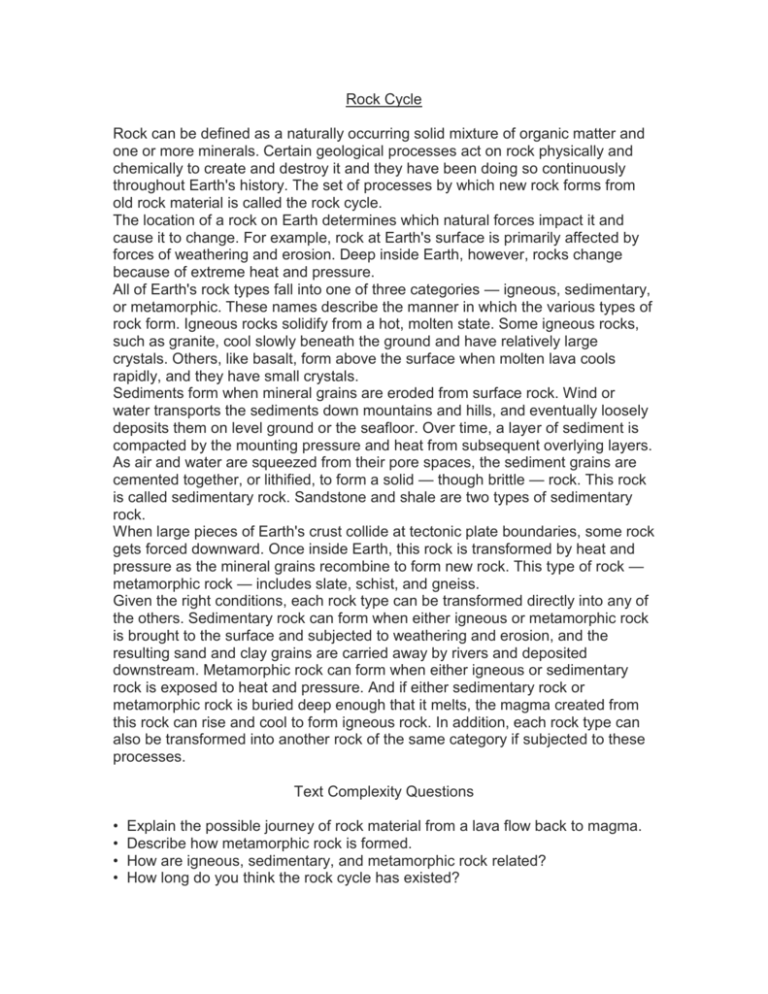Rock Cycle Rock can be defined as a naturally occurring solid
advertisement

Rock Cycle Rock can be defined as a naturally occurring solid mixture of organic matter and one or more minerals. Certain geological processes act on rock physically and chemically to create and destroy it and they have been doing so continuously throughout Earth's history. The set of processes by which new rock forms from old rock material is called the rock cycle. The location of a rock on Earth determines which natural forces impact it and cause it to change. For example, rock at Earth's surface is primarily affected by forces of weathering and erosion. Deep inside Earth, however, rocks change because of extreme heat and pressure. All of Earth's rock types fall into one of three categories — igneous, sedimentary, or metamorphic. These names describe the manner in which the various types of rock form. Igneous rocks solidify from a hot, molten state. Some igneous rocks, such as granite, cool slowly beneath the ground and have relatively large crystals. Others, like basalt, form above the surface when molten lava cools rapidly, and they have small crystals. Sediments form when mineral grains are eroded from surface rock. Wind or water transports the sediments down mountains and hills, and eventually loosely deposits them on level ground or the seafloor. Over time, a layer of sediment is compacted by the mounting pressure and heat from subsequent overlying layers. As air and water are squeezed from their pore spaces, the sediment grains are cemented together, or lithified, to form a solid — though brittle — rock. This rock is called sedimentary rock. Sandstone and shale are two types of sedimentary rock. When large pieces of Earth's crust collide at tectonic plate boundaries, some rock gets forced downward. Once inside Earth, this rock is transformed by heat and pressure as the mineral grains recombine to form new rock. This type of rock — metamorphic rock — includes slate, schist, and gneiss. Given the right conditions, each rock type can be transformed directly into any of the others. Sedimentary rock can form when either igneous or metamorphic rock is brought to the surface and subjected to weathering and erosion, and the resulting sand and clay grains are carried away by rivers and deposited downstream. Metamorphic rock can form when either igneous or sedimentary rock is exposed to heat and pressure. And if either sedimentary rock or metamorphic rock is buried deep enough that it melts, the magma created from this rock can rise and cool to form igneous rock. In addition, each rock type can also be transformed into another rock of the same category if subjected to these processes. Text Complexity Questions • • • • Explain the possible journey of rock material from a lava flow back to magma. Describe how metamorphic rock is formed. How are igneous, sedimentary, and metamorphic rock related? How long do you think the rock cycle has existed?







